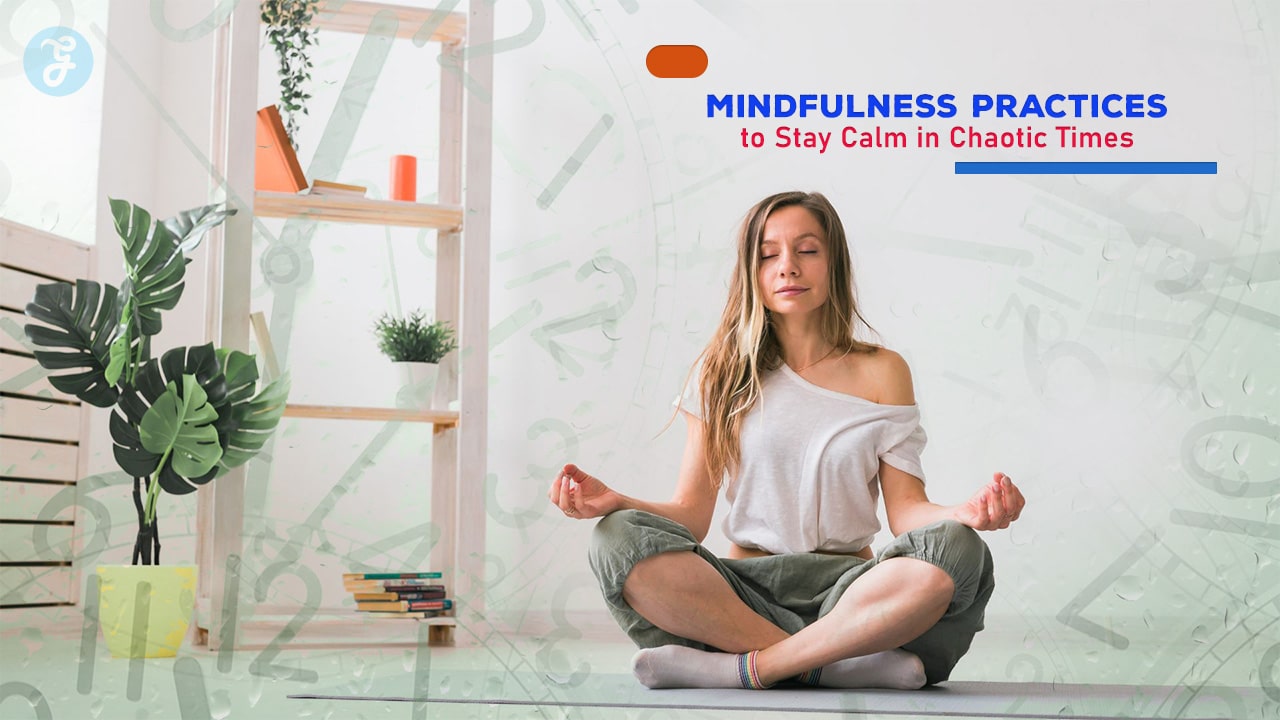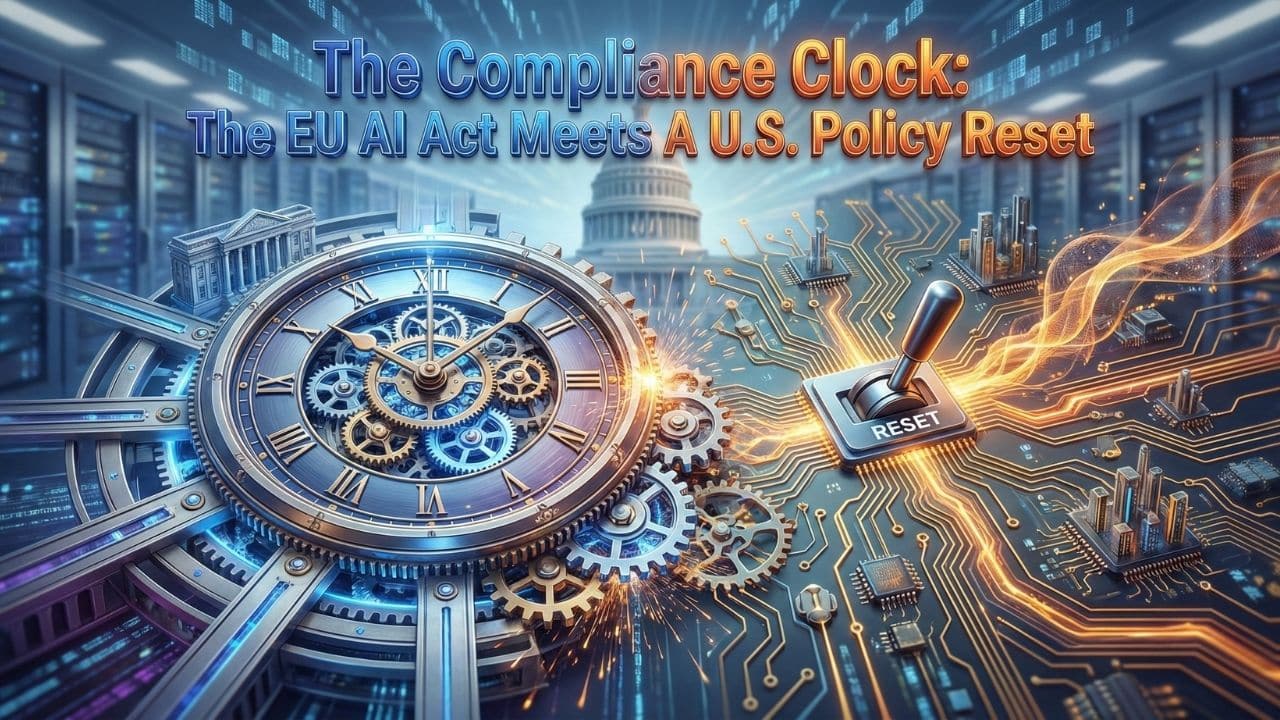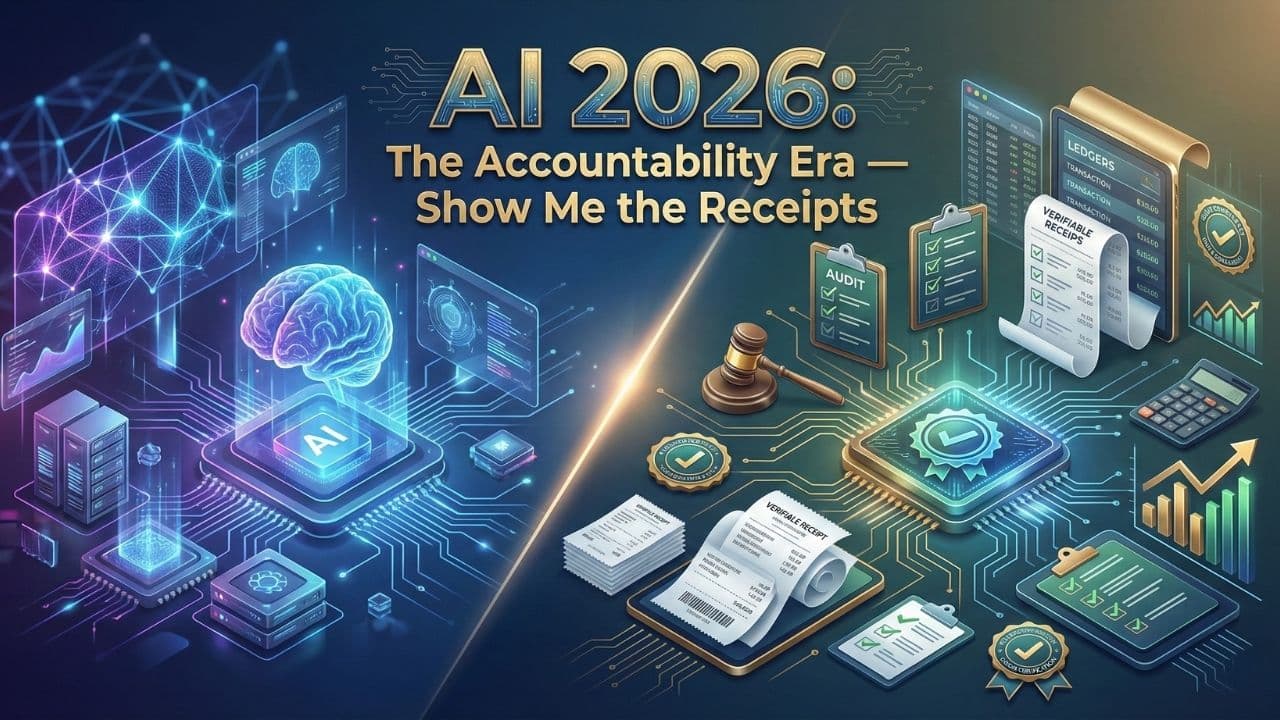In a world that often feels chaotic and overwhelming, mindfulness offers a powerful tool to ground ourselves in the present moment and manage stress more effectively.
Mindfulness is the practice of paying deliberate attention to the present moment without judgment.
By cultivating mindfulness, we can develop greater awareness of our thoughts, emotions, and physical sensations, helping us respond to life’s challenges with calm and clarity, rather than being swept away by stress and anxiety.
Whether you’re dealing with the pressures of daily life, personal crises, or global uncertainties, mindfulness practices can help you find moments of peace and calm amidst the chaos.
In this comprehensive guide, we’ll explore 12 detailed mindfulness practices to stay calm during turbulent times.
1. Mindful Breathing
Mindful breathing is one of the most foundational mindfulness practices and serves as a simple yet powerful way to anchor yourself in the present moment.
By bringing your attention to the breath, you can calm your mind, reduce stress, and regulate your body’s physiological response to anxiety.
It’s a practice that can be done anytime, anywhere, making it an ideal tool for chaotic moments.
How to Practice
- Find a Comfortable Position:
Sit or lie down in a comfortable, quiet place where you won’t be disturbed.
- Focus on Your Breath:
Close your eyes and take a deep breath in through your nose, allowing your abdomen to expand fully.
Slowly exhale through your mouth.
- Observe the Breath:
Pay attention to the sensation of the air entering your nostrils, filling your lungs, and then leaving your body.
Notice the rhythm of your breathing without trying to control it.
- Count Your Breaths:
If your mind starts to wander, gently bring your focus back by counting each inhale and exhale up to 10, then start again.
- Continue for 5-10 Minutes:
You can begin with just a few minutes a day, gradually extending the time as you become more comfortable with the practice.
Why It Works
- Physiological Regulation:
Deep breathing stimulates the parasympathetic nervous system, reducing the body’s stress response by lowering heart rate and blood pressure.
- Enhanced Focus:
Focusing on the breath trains your mind to stay present, reducing the impact of racing thoughts and anxiety.
- Instant Calm:
This practice can be used in any stressful situation to quickly bring yourself back to a state of calm.
2. Body Scan Meditation
Body scan meditation involves systematically paying attention to different parts of your body, from head to toe, to notice any tension, discomfort, or sensations.
This practice increases your awareness of your body’s physical state and helps you release tension you might not even realize you’re holding.
It’s particularly useful in times of high stress or when you’re feeling disconnected from your body.
How to Practice
- Lie Down or Sit Comfortably:
Find a quiet place where you can sit or lie down comfortably.
You can do this practice lying in bed or on a yoga mat.
- Begin with the Breath:
Close your eyes and take a few deep breaths to settle into the moment.
- Focus on Your Head:
Bring your attention to your scalp and forehead.
Notice any tension, tingling, or sensations.
Consciously relax these muscles.
- Move Down the Body:
Gradually move your attention to different parts of your body—your neck, shoulders, arms, chest, stomach, legs, and feet.
Spend a few moments focusing on each area, noticing any tension or sensations.
- Release Tension:
With each area, imagine releasing any tightness or stress.
Breathe into the tension and let it go with each exhale.
- End with Full-Body Awareness:
After scanning the entire body, take a moment to feel the sensations in your body as a whole, noticing the difference in relaxation and calm.
Why It Works
- Physical Relaxation:
The body scan helps identify and release physical tension, which often builds up unnoticed during stressful times.
- Increased Awareness:
By paying attention to your body, you become more aware of physical stress signals, which helps prevent long-term physical issues like chronic pain or tension headaches.
- Emotional Release:
The body and mind are connected; releasing physical tension often leads to emotional relief.
3. Loving-Kindness Meditation (Metta)
Loving-kindness meditation, or Metta meditation, is a practice that focuses on cultivating feelings of love, compassion, and kindness—both for yourself and others.
This meditation can help counter feelings of anger, resentment, or frustration, promoting emotional resilience and empathy.
In chaotic times, Metta meditation helps remind us that we are interconnected with others and that kindness can be a powerful force for both personal healing and relationship building.
How to Practice
- Sit Comfortably:
Find a quiet space to sit comfortably with your eyes closed.
- Focus on Yourself First:
Start by silently repeating phrases such as, “May I be happy, may I be healthy, may I be safe, may I live with ease.”
- Extend to Loved Ones:
After a few minutes, bring to mind someone you love deeply.
Repeat the same phrases, substituting their name: “May [name] be happy, may [name] be healthy…”
- Extend to Acquaintances and Strangers:
Gradually extend the loving-kindness to others, including acquaintances and people you may have conflicts with.
Wish them happiness, health, and peace.
- End with Universal Compassion:
End the meditation by extending love and kindness to all beings, including yourself. Feel the warmth of compassion spreading outward.
Why It Works
- Reduces Negative Emotions:
Loving-kindness meditation has been shown to decrease negative emotions like anger, resentment, and jealousy, while increasing feelings of empathy and compassion.
- Strengthens Relationships:
By cultivating kindness and compassion toward others, this practice helps improve your relationships and social connections.
- Increases Emotional Resilience:
In times of chaos, focusing on compassion helps you stay grounded and emotionally balanced, even when external circumstances are stressful.
4. Mindful Walking
Mindful walking is a practice that brings mindfulness into your everyday movements.
It’s an excellent way to integrate mindfulness into your daily routine, whether you’re walking in a park, around your neighborhood, or even indoors.
Mindful walking focuses on the physical sensations of walking, allowing you to stay present and connected to your body and surroundings.
How to Practice
- Start Walking Slowly:
Find a quiet place to walk without distractions. Begin by walking at a slower-than-normal pace.
- Focus on Each Step:
Pay close attention to the movement of your feet. Notice how your foot lifts off the ground, moves through the air, and gently touches down. Observe the sensation of the ground beneath your feet.
- Engage Your Senses:
As you walk, tune into your surroundings.
Notice the sound of your footsteps, the feel of the air on your skin, the sights and sounds around you.
Engage your senses fully in the experience of walking.
- Synchronize Breathing with Steps:
You can also synchronize your breath with your steps—inhale for four steps, exhale for four steps—to create a rhythmic, calming pattern.
- Stay Present:
If your mind starts to wander, gently bring your focus back to the sensations of walking.
Why It Works
- Physical and Mental Relaxation:
Walking is a natural way to reduce stress, and combining it with mindfulness amplifies its calming effects.
- Grounding in the Present:
Focusing on the physical sensations of walking keeps your mind anchored in the present moment, reducing anxiety and overthinking.
- Can Be Done Anytime:
Mindful walking can be easily incorporated into your daily routine, whether on your commute, during breaks, or at home.
5. Mindful Eating
In chaotic times, it’s easy to eat mindlessly—whether from stress or because we’re distracted by other tasks.
Mindful eating encourages you to slow down and fully engage with the experience of eating, helping you cultivate a deeper connection with food and appreciate its nourishment.
This practice can also help prevent emotional eating and improve digestion.
How to Practice
- Pause Before You Eat:
Before taking your first bite, pause to appreciate the food in front of you.
Consider where it came from and express gratitude for the nourishment it provides.
- Eat Slowly:
Take small bites and chew slowly, paying attention to the textures, flavors, and aromas.
Notice how the food feels in your mouth.
- Engage Your Senses:
Fully engage all your senses as you eat.
Observe the colors, textures, and smells of the food.
Feel the temperature and how it changes as you chew.
- Stay Present:
Avoid distractions like TV or phones.
Focus solely on the act of eating, savoring each bite.
When your mind wanders, gently bring it back to the sensory experience of eating.
- Listen to Your Body:
Pay attention to how your body feels throughout the meal.
Notice sensations of hunger and fullness, and eat accordingly.
Why It Works
- Prevents Overeating:
By eating mindfully, you become more aware of your body’s hunger and fullness signals, reducing the likelihood of overeating.
- Enhances Digestion:
Eating slowly and chewing thoroughly improves digestion and allows your body to absorb nutrients more effectively.
- Improves Relationship with Food:
Mindful eating encourages a healthy, non-judgmental relationship with food, reducing the tendency to use food as a way to cope with stress.
6. Gratitude Journaling
Gratitude journaling is the practice of regularly reflecting on and writing down things you’re grateful for.
During times of chaos or stress, focusing on gratitude helps shift your mindset from fear and anxiety to appreciation and positivity.
This practice trains your brain to notice the good in life, even when things feel overwhelming.
How to Practice
- Set Aside Time:
Choose a time each day (morning or before bed) to sit down with your journal.
Start by committing to just five minutes.
- Write Down Three Things:
Each day, write down at least three things you’re grateful for.
These can be big, like health or family, or small, like a warm cup of coffee or a sunny day.
- Reflect on Each Gratitude:
Don’t just list items—spend a moment reflecting on why each one is meaningful to you.
Visualize the positive feelings they evoke.
- Be Specific:
Instead of writing general statements, be as specific as possible.
For example, instead of “I’m grateful for my family,” you might write, “I’m grateful for the conversation I had with my sister today, which made me feel supported.”
- Revisit Your Journal:
Over time, revisit your previous entries to see how your sense of gratitude evolves.
Why It Works
- Shifts Focus:
Gratitude journaling shifts your focus from what’s going wrong to what’s going right, helping you cultivate a more positive outlook.
- Reduces Stress and Anxiety:
Focusing on the good things in your life helps reduce feelings of stress and anxiety, especially during difficult times.
- Increases Emotional Resilience:
By training your brain to look for positive moments, you build emotional resilience that helps you cope better with challenges.
7. 5-4-3-2-1 Grounding Technique
The 5-4-3-2-1 grounding technique is a powerful mindfulness tool for managing anxiety and overwhelming emotions.
It involves using your senses to ground yourself in the present moment, helping to distract your mind from stressful thoughts or feelings.
How to Practice
- Identify 5 Things You Can See:
Look around and find five things you can visually notice.
It could be a tree, a book, or the pattern on the wall.
Try to observe them in detail.
- Identify 4 Things You Can Feel:
Notice four things you can physically feel, like the texture of your clothes, the ground under your feet, or the warmth of your hands.
- Identify 3 Things You Can Hear:
Focus on three sounds around you.
It might be the hum of a fan, birds chirping, or distant traffic.
- Identify 2 Things You Can Smell:
Take a deep breath and notice two scents.
If you can’t smell anything, think of a favorite smell (like fresh bread or a loved one’s perfume).
- Identify 1 Thing You Can Taste:
Pay attention to one taste in your mouth.
If you can’t taste anything, imagine a taste you enjoy, like chocolate or mint.
Why It Works
- Interrupts Negative Thought Patterns:
The technique shifts your attention away from racing thoughts or anxiety by focusing on the present moment and engaging your senses.
- Immediate Calm:
This grounding technique is particularly helpful for calming yourself during a panic attack or highly stressful moment.
- Easy to Practice Anywhere:
Since it only requires your senses, you can practice this technique anytime, anywhere, whether at home, work, or in public.
8. Progressive Muscle Relaxation (PMR)
Progressive Muscle Relaxation (PMR) is a mindfulness technique that involves systematically tensing and relaxing each muscle group in the body.
This practice helps release physical tension and promotes deep relaxation, making it an excellent way to reduce stress and anxiety.
It’s especially useful for those who carry stress in their body, such as tension in the shoulders, neck, or back.
How to Practice
- Find a Comfortable Position:
Sit or lie down in a quiet place where you can focus on your body.
- Tense and Relax Muscles:
Starting with your feet, tense the muscles for 5-10 seconds, then slowly release them.
Notice the difference between the tension and relaxation.
- Move Up the Body:
Gradually move up your body, tensing and relaxing your calves, thighs, abdomen, chest, arms, shoulders, neck, and face.
- Breathe Deeply:
As you release tension from each muscle group, take a slow, deep breath, exhaling as you relax the muscles.
- End with Full-Body Relaxation:
Once you’ve completed the body, take a few deep breaths and allow your entire body to relax fully.
Why It Works
- Releases Physical Tension:
PMR helps release physical tension, which can accumulate in the body during stressful times. It’s particularly effective for reducing muscle tightness and headaches.
- Promotes Deep Relaxation:
The practice of tensing and releasing muscles promotes deep physical and mental relaxation, making it a helpful tool for falling asleep or winding down at the end of the day.
- Increases Body Awareness:
By focusing on the sensations in your body, you become more aware of where you carry stress and can take steps to release it regularly.
9. Mindfulness Meditation
Mindfulness meditation is a practice where you bring your attention to the present moment by focusing on your breath, thoughts, or bodily sensations without judgment.
It’s a core mindfulness practice that helps you develop awareness and acceptance of whatever arises, whether it’s pleasant or unpleasant.
Mindfulness meditation can be practiced formally through seated meditation or informally throughout the day.
How to Practice
- Find a Quiet Space:
Sit in a comfortable position, with your back straight but relaxed. Close your eyes if it helps you focus.
- Focus on Your Breath:
Bring your attention to your breath. Notice the sensation of air flowing in and out of your nostrils or the rise and fall of your chest and abdomen.
- Observe Thoughts Without Judgment:
As thoughts or feelings arise, observe them without getting caught up in them. Simply notice them and gently bring your attention back to your breath.
- Stay Present:
Continue focusing on your breath, bringing your mind back to the present moment each time it wanders.
- Practice for 5-20 Minutes:
Start with a few minutes and gradually increase the time as you become more comfortable with the practice.
Why It Works
- Reduces Stress and Anxiety:
Mindfulness meditation has been shown to reduce the body’s stress response, lower cortisol levels, and increase feelings of calm and relaxation.
- Improves Focus and Clarity:
By training your mind to stay present, you improve your ability to focus, which helps you respond to stress more effectively.
- Increases Emotional Regulation:
This practice allows you to observe thoughts and emotions without reacting impulsively, helping you manage difficult emotions more skillfully.
10. Visualization
Visualization is a mindfulness technique that uses mental imagery to create a sense of calm, peace, or achievement.
By focusing on positive, calming images, visualization helps shift your mental state away from anxiety or stress.
It can be used to relax or to visualize a successful outcome in a stressful situation, such as a presentation or difficult conversation.
How to Practice
- Find a Quiet Space:
Sit or lie down in a comfortable position and close your eyes.
- Visualize a Peaceful Scene:
Imagine yourself in a place that brings you peace, such as a beach, forest, or mountain.
Picture the colors, sounds, and smells of this place in vivid detail.
- Engage Your Senses:
Notice the temperature, the feeling of the air on your skin, the sounds of nature or water, and the smells of the environment.
- Immerse Yourself in the Image:
Allow yourself to fully immerse in this peaceful place, letting go of any stress or tension as you relax into the visualization.
- End with Calmness:
When you’re ready, slowly bring your awareness back to the present moment, carrying the sense of calm with you.
Why It Works
- Shifts Mental Focus:
Visualization shifts your focus away from negative or stressful thoughts, replacing them with calming or positive images.
- Promotes Relaxation:
By imagining a peaceful, tranquil setting, you help your mind and body relax, reducing anxiety and stress.
Visualization can also be used to mentally rehearse a successful outcome in stressful situations, such as public speaking, helping build confidence and reduce fear.
11. Mindful Listening
Mindful listening is the practice of giving your full attention to the sounds around you or to another person during a conversation.
In chaotic times, mindful listening can help you stay grounded, improve communication, and deepen connections with others.
It encourages you to be fully present, rather than distracted by your own thoughts or worries.
How to Practice
- Find a Quiet Space:
Sit in a quiet place and close your eyes.
Begin by tuning in to the sounds around you, whether it’s the wind, birds, or distant traffic.
- Focus on Sounds:
Focus your attention on the soundscape around you, noticing each sound as it comes and goes.
Avoid labeling or judging the sounds—simply observe them.
- Mindful Conversations:
When listening to someone speak, focus entirely on their words, tone, and body language.
Avoid planning your response while they’re talking, and instead give them your full, undivided attention.
- Practice Active Listening:
Reflect back on what the person is saying to ensure you understand, and ask open-ended questions to show your engagement.
Why It Works
- Improves Focus:
Mindful listening helps train your mind to stay present, reducing distractions and improving your ability to focus.
- Deepens Relationships:
When you listen mindfully, you strengthen your connections with others, showing them that you value their words and thoughts.
- Reduces Stress:
Mindful listening helps take your attention away from internal worries and anchors it in the present, reducing stress and anxiety.
12. Mindful Stretching
Mindful stretching combines gentle physical movement with mindfulness, helping you release physical tension and increase awareness of your body.
This practice is ideal for reducing stress, improving flexibility, and calming the mind, especially after long periods of sitting or being inactive.
It’s a simple way to integrate mindfulness into your physical routine, whether you’re at home or at work.
How to Practice
- Choose a Few Simple Stretches:
Select a few stretches that are comfortable for your body, such as reaching for the sky, touching your toes, or rotating your neck gently.
- Move Slowly and Deliberately:
As you stretch, move slowly and pay close attention to the sensations in your muscles.
Notice how your body feels as you stretch—any tension, release, or flexibility.
- Breathe Deeply:
Synchronize your breathing with your movements.
Inhale as you stretch, and exhale as you release the tension.
- Stay Present:
Focus fully on the physical sensations of stretching.
If your mind starts to wander, gently bring it back to the sensations in your body.
Why It Works
- Releases Physical Tension:
Mindful stretching helps release tension that accumulates in the body, particularly after sitting for long periods or experiencing stress.
- Increases Body Awareness:
This practice increases awareness of how your body feels in the moment, helping you recognize and release stress.
- Combines Physical and Mental Relaxation:
By combining movement with mindfulness, you enhance both physical relaxation and mental calm.
Final Thoughts
In chaotic times, mindfulness offers a powerful way to stay grounded, calm, and focused.
Whether you’re practicing mindful breathing, body scans, or loving-kindness meditation, these techniques can help you cultivate awareness, reduce stress, and improve your overall well-being.
By incorporating these 12 mindfulness practices into your daily routine, you can build emotional resilience, improve your relationships, and find peace even amidst life’s challenges.
The key to mindfulness is consistency. You don’t need to spend hours meditating or practicing to feel the benefits—even just a few minutes each day can make a difference.
Over time, mindfulness will become a valuable tool to help you navigate stressful situations with greater ease and composure, allowing you to live more fully in the present moment.







































